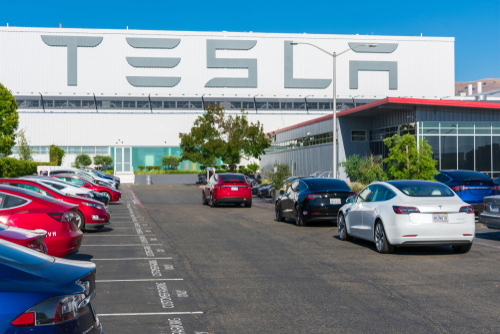At the peak of tulip mania in Holland in 1636, you could trade a single tulip bulb for a house along one of Amsterdam’s canals.
At the height of the Japanese property bubble in 1989, the land under the Japanese royal palace in Tokyo was worth more than all the real estate in California.
When the Nasdaq hit its highs on March 10, 2000, its value peaked at more than $6.7 trillion – more than two-thirds of the U.S. GDP of $10 trillion.
History does not repeat. But it does rhyme.
Speculative manias across financial history may differ in their details. But they all end in the same way.
Latecomers to tulip mania were left with worthless rotten tulip bulbs.
More than 30 years after the property bubble’s height, the Japanese real estate market has yet to rebound.
Nasdaq investors had to wait until 2015 for tech stocks to fully recover.
Today, a handful of assets are vying for the title of “Greatest Bubble in Financial History”: cryptocurrencies, nonfungible tokens and “meme” stocks.
Tesla: The King of the Meme Stocks
The list of fun facts about Tesla (Nasdaq: TSLA) is almost endless.
After trailing the S&P 500 for most of the year, Tesla rallied 55% over the past month.
Elon Musk’s 23% stake in Tesla means that his net worth is now $335 billion. Musk’s fortune makes him more valuable than the entire Exxon Mobil Corporation (NYSE: XOM).
Musk could buy every single Major League Baseball, National Basketball Association, National Football League and National Hockey League team.
To put Tesla’s stock rally into perspective: Tesla’s rise on October 27 was more than the entire market capitalization of Ford Motor Company (NYSE: F). Overall, Tesla gained the equivalent value of four Fords in October.
Tesla – which will make fewer than its annual goal of 1 million cars – is now worth more than the next nine most valuable car companies in the world.
That’s equivalent to roughly half of the German Stock Index (DAX). And Germany is the world’s fourth-largest economy.
Even Elon Musk described the recent rally as “strange.”
Teslamania Is Back
After pausing in 2021, Teslamania is back in full force.
A month ago, I made a video analyzing whether Tesla is a “Buy.” I highlighted that Tesla’s stock price had been lagging General Motors‘ (NYSE: GM) stock price substantially.
That all changed when Tesla announced the delivery of 241,300 cars on October 2 and the stock began to rally.
On October 27, Hertz (OTC: HTZZ) announced its intention to buy 100,000 Tesla vehicles by the end of 2022.
The Tesla bulls were back in control.
Meanwhile, the market ignored the news that Tesla had recalled 2,791 vehicles due to suspension problems.
It ignored that sales to rental companies like Hertz are usually a low-margin business. Moreover, rental cars return to the market as low-mileage used cars, depressing future demand for new models.
The market ignored that Musk’s Tesla solar business has been a complete flop.
And finally, it ignored Tesla’s preposterous valuation.
Tesla is now trading at a price-to-earnings ratio of 380. At a market cap of $1.1 trillion, Tesla is valued at more than $2 million per car based on the 500,000 vehicles it sold in 2020.
If Volkswagen (OTC: VWAGY) and Toyota (NYSE: TM) were valued the same way, their market caps would be close to $19 trillion each.
That amount is within spitting distance of the entire annual U.S. GDP.
The Psychology of Speculative Manias
Psychologist Carl Jung famously observed that “all perception is projection.”
That explains a lot about Tesla bulls.
Investors in Tesla see what they want to see. They ignore what they want to ignore.
In his book Narrative Economics, Yale professor Robert Shiller argues that speculative assets are governed by a dominant “narrative.” Narratives are, in turn, best explained by epidemiology.
Yes, Shiller believes that modeling how a virus spreads through a population offers more insight into Tesla’s stock price than anything else.
Whether you agree with him or not, one thing is clear: Tesla’s valuation is unmoored from any conventional measures.
As one banker put it, “Tesla stocks trade like tokens in the Musk fan club.”
That’s what makes Tesla so nefarious for professional investors stuck in the traditional paradigm. (I count myself among their ranks.)
So what can go wrong for Tesla?
The Fed could start raising rates to fight inflation. Other major central banks would undoubtedly follow suit.
Or China could force Tesla out of its fastest-growing market – as it has every other Silicon Valley giant, including Google and Facebook.
In my view, both of these are inevitable.
But those betting on Tesla’s demise should keep in mind the famous words of English economist and failed speculator John Maynard Keynes…
“The market can remain irrational longer than you can remain solvent.”
I can’t tell you when Tesla will collapse. But I can tell you that one day it will.
Good investing,
Nicholas
